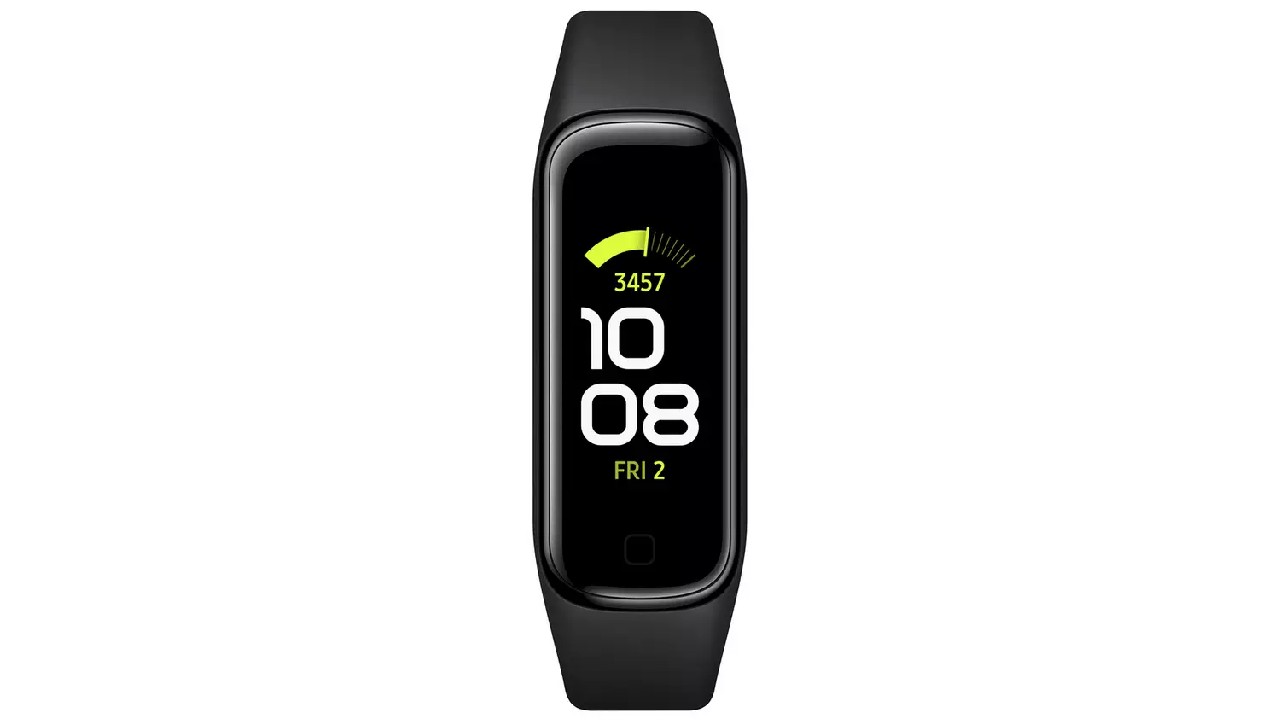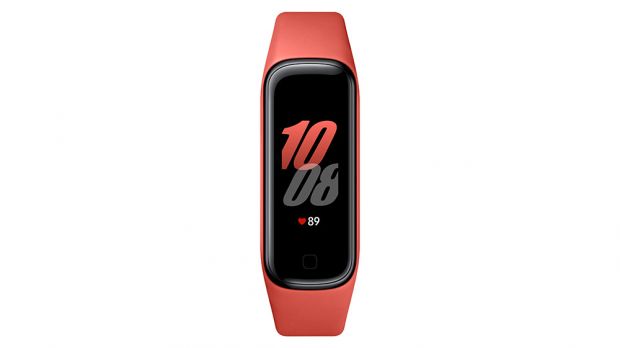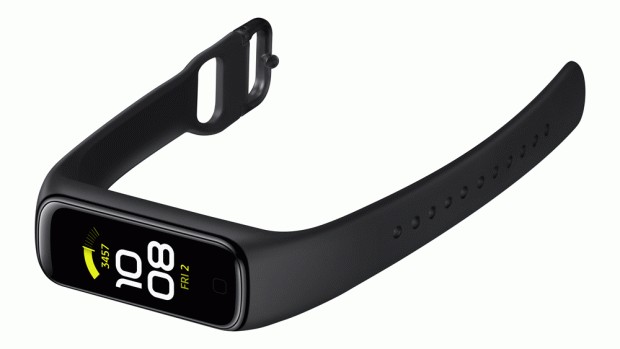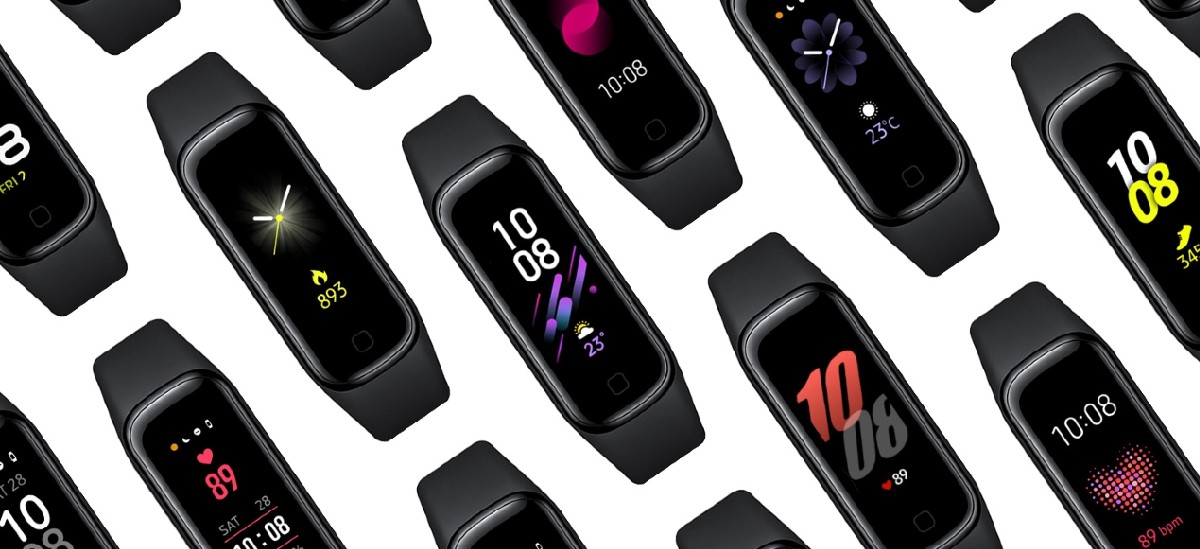Our Verdict
Excellent-value fitness tracker band with a sharp screen and good battery life, which gives the competition a run for their money.
For
- Stylish design
- Bright screen
- Automatic workout detection
- Excellent value
Against
- Samsung Health is limited
- Uncomfortable band design
- No physical button
You can trust Coach
This is a £50 wearable that’s made to take on the budget bands from the likes of Xiaomi, Honor and Amazfit (some of the best cheap fitness trackers). And it does so quite impressively, overall: it’s attractive, it has a sharp screen and its battery life – though not as strong as Samsung promises – will get you through a week without a charger.
But the sub-£50 market is highly competitive, and the Galaxy Fit 2 doesn’t necessarily do enough to differentiate itself from the £30 bands from the trio of brands above. That, combined with the weaknesses of the Samsung Health app you need to use and doubts about comfort, may mean that you’re better off spending less on something cheaper or spending more on something from Fitbit or Garmin.
We'd suggest you peruse the best fitness trackers and the best fitness smartwatches for comparison.
Samsung Galaxy Fit 2: Price And Availability
The Samsung Galaxy Fit 2 originally had an RRP of $59.99/£49. While it's no longer available from Samsung, it can still be picked up from other retailers including Amazon.

Tracking Activity On The Samsung Galaxy Fit 2
The Samsung Galaxy Fit 2 marks a change of direction for the line. The first iteration released in mid-2019 cost twice as much but the Galaxy Fit 2 has still managed to build on it, rather than engaging in serious cutbacks to keep the price down or using the cheaper, monochrome Galaxy Fit e as its starting point.
One of the best things about the Samsung Galaxy Fit 2 is that it can be set and forgotten about. Not only are the reminders to move timely and helpful, but it’s also very good at noticing when you’re active and automatically logging it, should you forget to set it going before a walk or workout.
The Galaxy Fit 2 is capable of tracking a surprisingly wide range of exercises, more than 90 by my rough count including ballroom dancing and hang-gliding, and you can select up to ten to have on the band at any one time. I’m not entirely convinced that there’s any significant difference between the modes, and you can expect each to track duration, heart rate and calories burned. Something like running or cycling, meanwhile, adds speed, distance and pace to that trio. Still, it’s useful for those who have more niche interests to have their activities correctly labelled.
Running With The Samsung Galaxy Fit 2
Like every other sub-£100 fitness tracker (apart from the Huawei Band Pro 4), the Galaxy Fit 2 needs to connect to your smartphone’s GPS to acquire more accurate distance and pace statistics.
There’s some confusion online as to whether it does piggyback on the GPS or just uses its own estimates. Certainly, there’s no wait for the signal to lock on as there is with other devices – you’re off and running at the end of a three-second countdown – and as far as I can tell the Galaxy Fit 2 is communicating with the phone, with a little green location logo appearing in the top right-hand corner when it has a connection.
In theory, this lack of locking-on delay should lead to initial inaccuracy before it can catch up, but in practice I found the Galaxy Fit 2 matched the distance tracked from the £300 Garmin Forerunner 245 on my other wrist. The run distances were within 0.05km of each other, which is perfectly reasonable. Heart rates were also comparable, with an average 3bpm discrepancy between them.
The Samsung Galaxy Fit 2’s small screen limits the amount of data that can be seen without manually swiping, which is fiddly when moving at speed. To Samsung’s credit, the screen is bright and sharp enough that the two bits of data on each screen can be absorbed at a glance, but expect to find swiping while running a bit of a faff.
That might not matter if you’re the kind of person who runs on feel and is happy to review duration, distance, calories, speed, pace, heart rate and cadence in the app afterwards. It’s not the most in-depth app, and – unlike rivals such as Fitbit and Garmin – there’s no web version to consult if you prefer analysis on the big screen. It’s also extremely limited in what other apps it can link to, with only Strava listed – which is an even shorter list than the last time I played with Samsung Health for the Galaxy Watch Active 2, when it also offered TechnoGym support.

Sleep Tracking With The Samsung Galaxy Fit 2
Like most of its rivals, the Samsung Galaxy Fit 2 offers automatic sleep tracking, and it can tell the difference between a nap and a period of reclining on a sofa.
The data compiled is decent too. You get a graph showing when you were awake, and in light, deep and REM sleep. The time spent in each different state is translated into an overall efficiency score – basically time awake subtracted from time asleep, and converted into a percentage. The app will even tell you how many calories you burned while asleep.
But like every other fitness tracking company, Samsung isn’t really clear as to what you should actually be doing with the data. The Samsung Health app does include a one-page summary of why sleep is important, courtesy of the National Sleep Foundation, but bafflingly there’s no explanation of how you can improve your chances of a good night’s shut-eye. It’s not that this information is particularly hard to come by, but it seems odd that Samsung doesn’t even include a cursory mention of reducing caffeine or the perils of late-night screen scrolling.
Battery Life On The Samsung Galaxy Fit 2
The 159mAh battery powering the Galaxy Fit 2 is supposedly good for 15 to 21 days, depending on whether you have normal or low usage. That promising figure is a bit of a fudge, because in this context low usage involves disabling the heart rate monitor and auto workout tracking, and normal use means you don’t wear it to bed for sleep tracking.
The upshot of this is that if you have everything enabled, you’re going to get a lot less than this – although not so little that we’d flag up battery life as a weak spot. We found we could get more than a week’s use out of it – more on lazy weeks and a bit less on active ones, but that’s pretty standard for fitness trackers.
Design Of The Samsung Galaxy Fit 2
The screen, though bright and readable, only pops on when you raise your arm or with a long press of the capacitive button – otherwise, it just looks like a nondescript black wristband. In fact, you could easily wear it with another more dressy watch, and nobody would bat an eyelid.
Looks-wise, there’s very little to choose between the new Galaxy Fit 2 and almost any other fitness band on the market, from the Amazfit Band 5 to the Fitbit Inspire 2. It’s perhaps closer to a full-blown smartwatch than some of its rivals, thanks to the bright 1.1in AMOLED screen. As is usually the case with fitness trackers, the screen size is actually a bit of an optical illusion, with a thick black bezel masked by the black background on every screen.
The key difference is how you interact with it: there aren’t any physical buttons so you have to press the capacitive area underneath the screen, or raise your arm in a purposeful manner, before your standard touchscreen swipes and taps come into play. It’s a little bit fiddly, but it still beats the Fitbit Inspire 2’s frustratingly inconsistent “squeeze” mechanism.

The only misstep is the unusual clasp, which means you have to tuck the strap under itself once the stud is fastened. This means you’ll actually want a looser fit than you’d expect, because it tightens once you tuck the end of the strap in. The result is a fitness tracker which barely budges – handy for consistent heart rate measurements but not ideal for comfort, especially at night. While the fitness tracker can be removed from this uncomfortable band, there’s a relative shortage of third-party straps. If comfort is king, Fitbit is far superior.
Smart Features On The Samsung Galaxy Fit 2
As with most of the competition, smart features are pretty limited. You can check the weather, change the watch face, control your phone’s music and receive notifications – albeit with the same readability issues you get on every wearable with a tall, narrow aspect ratio – but there’s no app store to expand your experience, and the device is more of a gateway to your phone than a phone replacement.
It does, however, feel like there’s potential for Samsung to build on this in future. The device ships with a widget to ensure you wash your hands for a pandemic-friendly length of time, for example.
Should You Buy Something Else?
The Samsung Galaxy Fit 2 is a fitness tracker with a lot going for it and at under £50 it represents excellent value. It’s certainly up there with the Xiaomi Mi Band and Honor Bands of this world for functionality, and comes in at a similar price.
There are two possible reasons I might suggest looking elsewhere. First, these trackers, though generally solid, don’t have the best companion apps in the world; if you want a more user-friendly experience, you’re probably better off springing the Fitbit Inspire 2 which is £40 more. The Fitbit app has the added advantage of being really popular, so you’ll probably know one or two people already using it and can engage in some friendly steps-based competition.
The second is the lack of built-in GPS. True, very few bands in this price bracket have their own GPS chips, but the Huawei Band 4 Pro does, and at the time of writing it will cost you £50 – the same as the Samsung Galaxy Fit 2’s RRP.
Still, you’re unlikely to be disappointed if you opt for the Samsung Galaxy Fit 2. It looks stylish, has a sharp, readable screen and offers all the functionality you could reasonably expect. At £50, it’s a worthwhile addition if you’re already a happy member of the Samsung mobile ecosystem.
Alan is a freelance tech journalist and mostly covers fitness trackers for Coach.
Alan was not what you would call a big fitness guy growing up, but has been radicalised by parkrun and taken up running in a big way. Although nowhere near podium at races, as a late starter he does at least know that he can still get faster. Alan has written for ShortList, Tom’s Guide, Trusted Reviews and Expert Reviews, among others.


